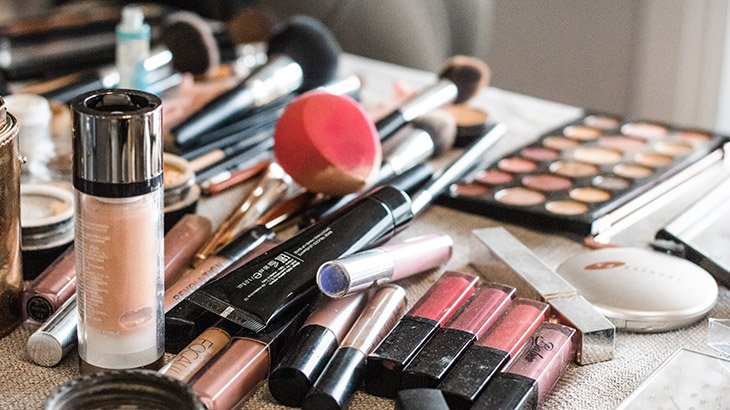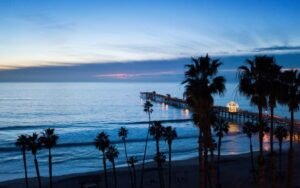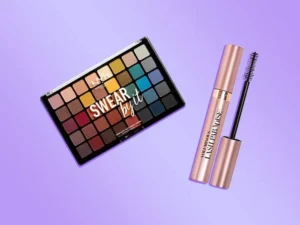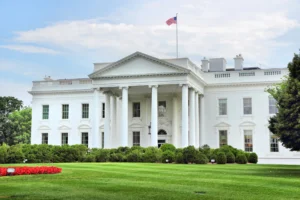
Take a moment to imagine a world without mascara wands, lipstick tubes, or blush palettes – it’s nearly impossible! Makeup has become an integral part of our daily routines and self-expression, but have you ever wondered about its intriguing origins? In this article, we will unravel the fascinating history behind cosmetic trends. So whether you’re exploring vintage-inspired glamour or experimenting with bold and avant-garde looks, let Christmasmakeups.com be your ultimate guide in discovering the endless possibilities of beauty transformation. From ancient Egyptians using kohl as eyeliner to flappers rebelling against societal norms with bold red lips in the 1920s, each era has brought forth its own unique set of beauty standards. Buckle up as we travel back in time to uncover the secrets behind humanity’s enduring pursuit of aesthetics.
The significance of makeup throughout history.
Throughout history, makeup has played a significant role in defining beauty standards and enhancing one’s appearance. From Ancient Egypt to the Elizabethan era, makeup has been used as a powerful tool for both self-expression and social status. In ancient civilizations, such as the Egyptians, makeup was not only used for decorative purposes but also held symbolic meanings. For instance, dark eyeliners were worn to protect the eyes from evil spirits and diseases while bright colors on the lips represented youthfulness and vitality.
In medieval Europe, heavy white face powder was highly fashionable among noblewomen as it symbolized wealth and nobility. This practice often came at a cost – lead-based cosmetics were used that had detrimental effects on women’s skin. However, it is important to note that these extreme practices of beauty have evolved over time with increased awareness about safe cosmetics.Today, makeup serves various purposes beyond simply enhancing one’s features. It has become an art form through which individuals express their creativity and identity. The use of bold colors or unconventional techniques allows people to challenge societal norms and push boundaries when it comes to self-presentation.
Renaissance era: Pale skin and heavy embellishments.
During the Renaissance era, fair and pale skin was highly prized as it signified high social status. Women would go to great lengths to achieve a porcelain complexion by using various techniques such as applying lead-based cosmetics and covering themselves with white face powder. This ideal of beauty was heavily influenced by religious art at the time, where saintly figures were depicted with ethereal, luminous skin.
Not only did women strive for pale skin, but they also adorned their faces with heavy embellishments to enhance their features. Lavish makeup application was seen as a way to elevate one’s attractiveness and showcase wealth and privilege. Black kohl eyeliner was used to define the eyes in an intense manner that captured attention. Elaborate hairdos created using wigs and hairpieces were styled with intricate braids, curls, or buns, often adorned with pearls or flowers. The obsession with pale skin and heavy embellishments during the Renaissance era demonstrates society’s preoccupation with appearance. It highlights how beauty standards have constantly evolved throughout history as a reflection of social norms and ideals.
Victorian era: The rise of natural beauty trends.
During the Victorian era, beauty standards took a shift towards embracing a more natural appearance. Women aimed to achieve a delicate and minimalistic look, as they believed that excessive makeup was associated with lower social status. To enhance their natural features, pale skin became highly desirable, and women used various products such as rice powder and lead-based creams to achieve this look. Although these cosmetics were harmful to their health, women persisted in using them in order to conform to societal expectations.
Hair was also an important aspect of beauty during this time period. Long, flowing locks were considered the epitome of femininity, and women went to great lengths – quite literally – to maintain their hair’s health and length. Hair care routines typically involved frequent brushing, applying oils or pomades for shine, and wearing elaborate hairstyles adorned with flowers or ribbons. While some women maintained their natural hair color, others opted for dark dyes made from ingredients such as walnut shells or even henna. Overall, the rise of natural beauty trends during the Victorian era was driven by societal pressure and desire for conformity rather than personal expression. Despite the dangerous consequences of using certain cosmetics and hair treatment methods at the time, it is fascinating to see how beauty ideals have evolved over time – emphasizing both society’s influence on individuals’ self-perception and humans’ inherent desire for acceptance within their community.
Modern day: Embracing diversity and self-expression.
In today’s modern world, diversity and self-expression have become more important than ever before. People are embracing their unique qualities, experiences, and cultures, breaking free from the constraints of societal beauty standards. The beauty industry is finally starting to reflect this shift by offering a wide range of products that cater to different skin tones, hair types, and even gender identities.
One of the most significant developments in recent years is the growing acceptance and celebration of non-binary and transgender individuals. Makeup has become a powerful tool for self-expression for these communities, allowing them to fully embrace their true selves. Brands like Milk Makeup have been at the forefront of this movement with their inclusive campaigns featuring models who do not conform to traditional gender norms. Furthermore, the rise of social media platforms such as Instagram has given a voice to individuals who were previously underrepresented in mainstream media. Influencers from diverse backgrounds are using these platforms to share their journey towards self-acceptance and inspire others to do the same. This newfound ability for everyone to showcase their individuality fosters a sense of belonging in an era where being ‘different’ is no longer seen as a flaw but as something beautiful that should be celebrated.
Conclusion: The ever-changing beauty standards and trends.
The ever-changing beauty standards and trends have been a constant feature throughout history, reflecting the cultural shifts and societal norms of each era. From the pale complexions in ancient Egypt to the highly contoured faces of the 21st century, it is clear that beauty ideals are not fixed but rather fluid entities influenced by various factors. What was considered attractive in one era may be deemed outdated or even unappealing in another.
Despite this eternal flux, there is a common thread that runs through these shifting standards: the pursuit of perfection. Every generation aims to achieve an idealized version of beauty, often resorting to extreme measures such as corsets, foot binding, or even cosmetic surgery. The desire for flawlessness becomes an exhausting cycle as new trends emerge and individuals find themselves constantly trying to conform to an ever-moving target. However, recent movements like body positivity and inclusive representation are challenging these traditional notions of beauty. People are embracing diversity and rejecting unrealistic expectations set by society. This shift indicates a growing acceptance that true beauty lies in individuality rather than conformity—a powerful notion that can redefine our understanding of what it means to be beautiful.





